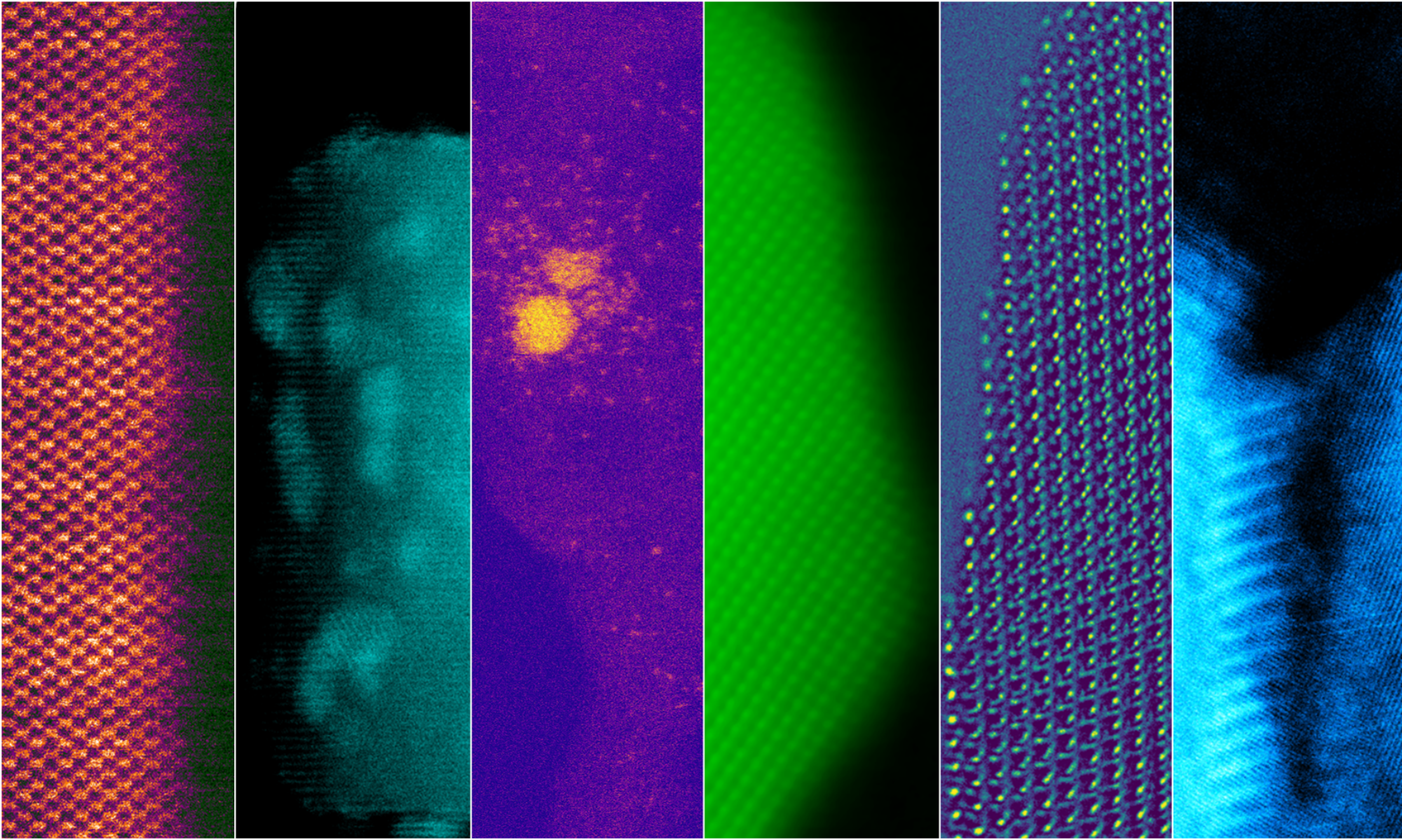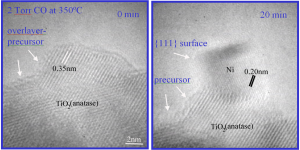(Supported by National Science Foundation)
Metal supported catalysts consist of metal nanoparticles on a nanoscale oxide support. These catalysts can be tailored to control many reactions of importance to energy and understanding their mode of operation is critical for development of new sustainable technologies. We are undertaking fundamental studies of the synthesis and characterization of metallic and bimetallic nanoparticles on a variety of supports. Our goal is to understand the fundamental structural changes taking place during the synthesis, operation and regeneration of the nanocatalysts. See our movie of palladium nanoparticles gasifying a hydrocarbon support during regeneration:
MOVIE
Recent Publications from This Project
Rou-Jane Liu, P. A. Crozier*, C. M. Smith, D. A. Hucul, J. Blackson and G. Salaita(2004) “In-Situ Electron Microscopy Studies of the Sintering of Palladium Nanoparticles on Alumina during Catalyst Regeneration Processes”, Microscopy and Microanalysis, 10:01, 77-85.
Rou-Jane Liu, P. A. Crozier*, C. M. Smith, D. A. Hucul, J. Blackson and G. Salaita(2005) “A New Contact Sintering Mechanism Associated with Regeneration of Pd/Al2O3 Hydrogenation Catalyst”, Applied Catalysis A:General, 282, 111-121.
P. Li, J. Liu, N. Nag, and P. A. Crozier* (2005) “Atomic-Scale Study of In-Situ Metal Nanoparticle Synthesis in a Ni/TiO2 System “, J.Chem. Phys. B, 109, 13883.
P. Li, J. Liu, N. Nag, and P. A. Crozier* (2006) “Dynamic Nucleation and Growth of Ni Nanoparticles on High Surface Area Titania”, Surf. Sci., 600, 693.
P. Li, J. Liu, N. Nag, and P. A. Crozier* (2006) “In Situ Synthesis and Characterization of Ru Promoted Co/Al2O3 Fischer-Tropsch Catalysts”, Appl. Catal. A, 307 (2), 212-221.
Two time-lapsed atomic resolution electron micrographs showing a nickel nanoparticle nucleating on the surface of a titania nanoparticle during catalyst synthesis in a carbon monoxide atmosphere.

